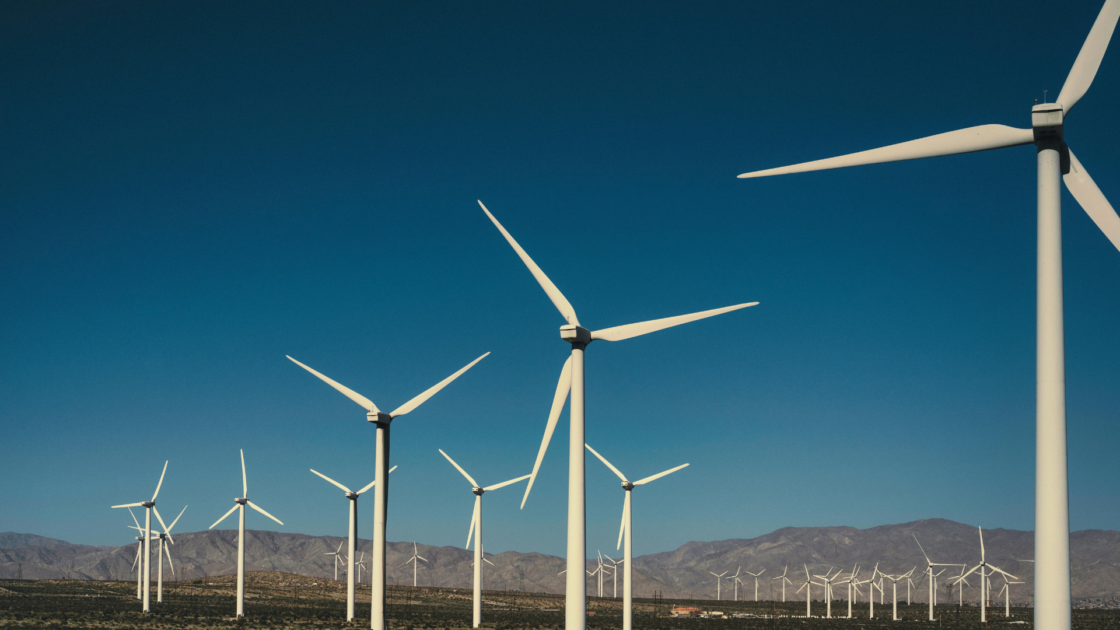
Tamil Nadu stands as a leader in India’s power sector, ranking third in the nation with a total installed power capacity of 39.7 GW as of March 2024. Of this, renewable energy accounts for 56%, with wind power contributing a substantial 10.7 GW, making Tamil Nadu the second-highest in India for wind energy capacity. Coal and lignite dominate the state’s energy generation, comprising 37% of the installed capacity, while wind energy accounts for 26.7% of the energy mix. Despite the impressive share of renewables in capacity, only 28% of the state’s energy generation comes from these sources, with wind contributing 15% of the power generated.
Wind Energy in Tamil Nadu
Tamil Nadu has long been a pioneer in wind energy, benefitting from high wind speeds along its coastlines. The state took advantage of favourable government policies in the 1990s, including tax incentives and feed-in tariffs, to build a robust wind sector. However, many of the turbines installed in Tamil Nadu date back to this period and now face significant efficiency and safety challenges. Most of these turbines have low hub heights and capacities of less than 2 MW, resulting in a low Capacity Utilization Factor (CUF) of just 10-14%. Globally, wind technology has evolved, with turbines now averaging capacities of 3.2 MW. In India, companies like Adani Wind are developing even larger turbines, with capacities of 5.2 MW. To address these inefficiencies, the state needs to embark on repowering—replacing older turbines with modern, high-capacity models to optimize energy production and reduce safety risks.
Potential of Wind Repowering in Tamil Nadu
Tamil Nadu holds the highest wind repowering potential in India, estimated at 7.3 GW. By replacing outdated turbines with new, efficient models, the state could nearly double its wind energy generation to almost 30 billion units annually. Currently, 80% of Tamil Nadu’s turbines have capacities below 1.5 MW, and repowering these turbines could significantly enhance output. With identified zones like Muppandal and Poolavadi holding immense potential, repowering efforts could revolutionize Tamil Nadu’s wind energy landscape, positioning the state as a key player in India’s clean energy future.
Tamil Nadu Repowering and Life Extension Policy for Wind Projects (2024)
Tamil Nadu’s Repowering and Life Extension Policy, valid until 2030, aims to increase wind energy generation by at least 1.5 times through repowering or refurbishment of older turbines. Eligible projects are those over 15 years old and connected to the state transmission grid. The policy outlines various incentives, including micro-siting norms, banking arrangements, and wind-solar hybrid installations. However, it also poses challenges for wind turbine owners, particularly in terms of transmission capacity and infrastructure development charges. These obstacles need to be addressed for the successful implementation of repowering projects.
Challenges in the Repowering Policy
The draft repowering policy faces several hurdles, including fragmented ownership of turbines, limitations on wind energy banking, and inadequate transmission capacity. Ownership fragmentation complicates consolidation efforts, as many turbines are owned by private players who benefit from different policies. The banking policy allows only 50% of energy to be banked for post-2018 projects, with consumption restricted to non-peak hours. Additionally, transmission bottlenecks present a major challenge, as existing 11 kV lines cannot handle the increased power generation from repowered turbines. Addressing these issues is crucial for the success of Tamil Nadu’s wind repowering efforts.
On-Ground Experience of Wind Repowering: Case Studies
Repowering efforts in Tamil Nadu have shown promising results. Case studies from wind farms such as Narasus Spinning Mills and Hatsun Agro Products demonstrate significant improvements in energy generation and CUF after repowering. In some cases, CUF tripled, thanks to higher hub heights and larger rotor diameters. However, infrastructure challenges, such as deteriorating foundations and the high cost of grid upgrades, remain significant obstacles. Despite these hurdles, repowered projects have successfully replaced aging turbines, proving that wind repowering is a viable solution for extending the life and efficiency of Tamil Nadu’s wind farms.
Economics of Wind Repowering
The financial analysis of wind repowering projects reveals higher costs compared to greenfield projects. The total cost for repowering a 250-kW turbine is approximately Rs 170 lakh, compared to Rs 148 lakh for a new installation. The additional expenses stem from the dismantling of old turbines, grid upgrades, and reusing foundations. However, repowering projects yield significant savings in terms of energy generation and reduced maintenance costs. Despite the extended payback period, financial incentives and government-backed loan guarantees could bridge the economic gap, making repowering an attractive option for wind farm owners.
CSE’s Proposal for Wind Repowering in Tamil Nadu
To address the challenges in Tamil Nadu’s repowering policy, the Centre for Science and Environment (CSE) recommends a holistic approach. This includes upgrading the state’s transmission infrastructure, promoting land consolidation for fragmented ownership, and introducing financial incentives such as generation-based incentives and feed-in tariffs for repowered projects. Additionally, the integration of wind-solar hybrid systems could maximize energy production and reduce costs. By revising the repowering policy to address these gaps, Tamil Nadu could unlock its full potential in wind energy production and lead India’s renewable energy transition.
Conclusion
Repowering wind farms in Tamil Nadu presents a significant opportunity to boost the state’s renewable energy generation. However, the current challenges—fragmented ownership, transmission bottlenecks, and policy limitations—need to be overcome for successful implementation. With the right support and incentives, Tamil Nadu can double its wind energy output, contribute to India’s climate goals, and solidify its position as a leader in clean energy.
This article is based on the report Accelerating Wind Repowering in Tamil Nadu: CSE Proposal by Binit Das, Centre for Science and Environment (CSE).
